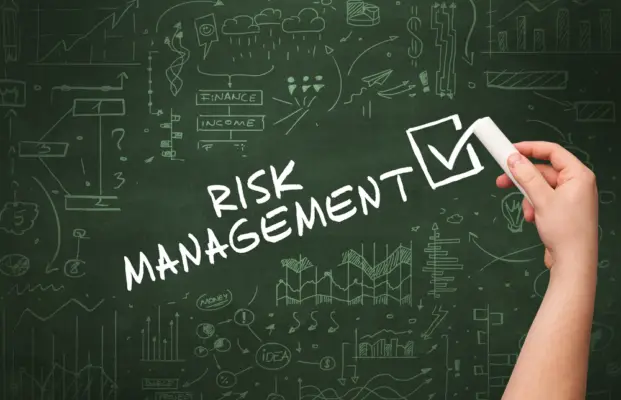Enterprise Risk Management (ERM) is a comprehensive and integrated framework for managing risks and opportunities that affect the achievement of an organization’s objectives.
ERM involves identifying, assessing, responding to, and controlling risks across an organization in a coordinated and strategic manner.
Enterprise risk management has become an increasingly important aspect of business operations in recent years.
As organizations face many financial, operational, legal, and reputational risks, adopting a systematic approach to identify and mitigate these risks has become critical. Enterprise Risk Management (ERM) is important for several reasons:-
Improves Decision Making: By providing a comprehensive view of risks, ERM allows management to make informed decisions. It helps prioritize risks based on their potential impact and likelihood, guiding resource allocation and strategic planning.
Enhances Risk Response: ERM helps in developing effective strategies to manage risks. This can include risk avoidance, reduction, sharing, or acceptance. By understanding the risk landscape, organizations can respond in a way that aligns with their risk appetite and business objectives.
Promotes a Risk-aware Culture: ERM fosters a culture where everyone understands the importance of risk management. This can lead to more proactive risk identification and management and better alignment with the organization’s risk tolerance and strategy.
Compliance and Regulatory Requirements: Many industries have regulations that require certain risk management practices. ERM ensures that the organization meets these requirements, avoiding potential fines and penalties.
Protects Reputation and Stakeholder Confidence: Effective risk management can protect the organization’s reputation by preventing incidents that could harm its public image. It also builds confidence among stakeholders, including investors, customers, and employees, that the organization is well-managed and prepared to handle adverse events.
Creates Value: Ultimately, ERM is about creating and preserving value. By managing risks effectively, organizations can protect their assets, take advantage of opportunities, and achieve their strategic objectives.
Enterprise risk management (ERM) provides a framework that enables organizations to take a proactive rather than reactive approach to manage their risks. At its core, enterprise risk management involves identifying and assessing potential risks, followed by developing strategies to mitigate or respond to them.
The ERM process is designed to provide organizations with a holistic view of their risk landscape and enable them to make informed decisions about allocating resources to mitigate the most critical risks.
This article will explore why enterprise risk management is essential in today’s business environment and discuss some benefits of adopting this approach.
The Importance of Enterprise Risk Management in Today’s Business Environment
The contemporary business landscape necessitates adopting enterprise risk management as a critical strategy to mitigate potential risks and ensure long-term organizational success.
In today’s fast-paced world, businesses face numerous challenges, such as cyber-attacks, natural disasters, global competition, and regulatory compliance. These challenges can adversely affect a company’s operations and financial stability if not managed effectively.
Enterprise risk management provides a systematic approach to identifying, assessing, prioritizing, and managing organizational risks. Companies can comprehensively understand their risks and develop effective mitigation strategies by implementing enterprise risk management practices.
Effective enterprise risk management enables organizations to anticipate potential threats and respond proactively rather than reactively when they occur. This approach helps reduce uncertainty in decision-making processes and improves overall organizational performance.
Moreover, effective enterprise risk management practices enable businesses to comply with legal regulations while avoiding reputational damage that may result from non-compliance.
Compliance with laws is essential for any organization seeking sustainable growth or expansion into new markets. Therefore, organizations must adopt an integrated approach to manage their risks effectively while consistently complying with legal requirements.
Adopting enterprise risk management practices is essential for organizations in today’s business environment. By doing so, companies can identify potential threats before they become significant problems that could impede organizational success or even lead to failure.
Effective enterprise risk management practices also help businesses comply with legal regulations while minimizing the negative impact of reputational damage that may result from non-compliance.
Identifying and Assessing Potential Risks
Developing a risk management framework and conducting risk assessments are crucial steps in identifying and assessing potential risks for any organization.
A well-developed framework provides an organized approach to identifying, analyzing, evaluating, and monitoring risks that could impact an organization’s objectives.
A comprehensive risk assessment involves identifying potential threats and vulnerabilities, assessing the likelihood of those risks occurring, and determining their potential impact on the organization.
Developing a Risk Management Framework
Establishing a comprehensive risk management framework is essential for organizations to proactively identify and mitigate potential risks, ensuring long-term stability and success.
A risk management framework outlines the processes, policies, and procedures necessary to manage risk effectively. It includes guidelines on identifying, assessing, prioritizing, monitoring, and responding to risks that may impact an organization’s operations or objectives.
Developing a risk management framework involves several steps. First, the organization must establish its risk appetite and tolerance levels based on its strategic objectives.
Then, it should identify all possible sources of risk through a thorough analysis of internal and external factors such as financial performance, regulatory compliance requirements, industry trends, geopolitical events, or natural disasters.
Next comes prioritizing those risks based on their likelihood of occurrence and potential impact on the organization. Finally, it is crucial to determine the appropriate response strategies for each identified risk based on their priorities, such as avoidance or reduction measures or transferring the risks through insurance policies or contracts with third-party vendors.
Creating robust risk management that aligns with organizational goals and culture while incorporating best practices from various industries and disciplines can help organizations not only mitigate potential threats but also seize opportunities for growth in uncertain times.
Conducting Risk Assessments
Risk assessments are an integral part of any organization’s strategy to identify potential threats and opportunities for growth proactively.
A company can identify potential risks that may negatively impact its operations or reputation through risk assessment. This allows the company to take preventive measures to mitigate these risks before they become problems.
Risk assessment also helps companies identify opportunities for growth and expansion. Thoroughly analyzing their current business practices, companies can identify areas where they could potentially increase revenue or expand their customer base.
In this way, risk assessment is a valuable tool for strategic planning and decision-making within organizations.
Conducting regular risk assessments, companies can ensure that they are prepared for any challenges that may arise while also positioning themselves for future success.
Mitigating Risks and Developing Risk Response Strategies
Mitigating risks is a crucial aspect of enterprise risk management, requiring a systematic approach to identifying and prioritizing potential threats and developing effective response strategies. This involves understanding the nature of risks facing an organization, their likelihood of occurring, and the severity of their impact.
Once identified, risks can be assessed in terms of their potential consequences and probability of occurrence. This information is then used to develop mitigation plans prioritizing the most significant risks for attention.
Organizations must take a comprehensive approach addressing all risk management stages to mitigate risks effectively.
This includes identifying threats through regular assessments, developing effective controls to prevent or reduce the likelihood of occurrence, establishing contingency plans for when incidents do occur, and continuously monitoring risk levels to ensure they remain within acceptable thresholds.
Effective risk management requires proactive planning rather than reactive responses when issues arise.
Developing robust risk response strategies requires collaboration across departments and organizational and functional areas.
Risk managers must work closely with stakeholders to identify specific objectives for managing each type of risk the organization faces. These objectives should be clearly defined, measurable, and aligned with organizational goals.
A successful enterprise risk management program will help organizations minimize financial losses due to unexpected events while also improving operational efficiency and decision-making capabilities.

Integrating Risk Management into Strategic Planning
Integrating risk management into strategic planning can enhance an organization’s ability to anticipate and respond to potential threats, ultimately improving its overall performance.
By incorporating risk considerations into the company’s long-term plans, decision-makers can identify potential risks that may impact their goals and objectives. This approach enables organizations to avoid or mitigate unforeseen risks before they become detrimental.
Furthermore, integrating risk management into strategic planning can help companies optimize resource allocation decisions. An effective risk assessment process allows organizations to prioritize risks based on their likelihood of occurrence and potential impact on the business.
Therefore, by allocating resources toward high-priority risks, companies can minimize the negative consequences of adverse events while maximizing returns on investments in risk mitigation strategies.
Lastly, integrating risk management into strategic planning enhances transparency and accountability across all levels of an organization. Employees at all levels are informed about potential risks and understand how those risks could impact the company’s operations and financial performance.
As a result, employees are more likely to take appropriate actions when faced with a potential threat or opportunity for improvement.
In this way, integrating risk management into strategic planning creates a culture of proactive decision-making that drives continuous improvement throughout the organization.
The Benefits of Enterprise Risk Management
Integrating risk management into strategic planning is crucial for an organization’s success. However, implementing enterprise risk management (ERM) takes it further by providing a structured and comprehensive approach to identifying, assessing, and managing risks across the organization.
ERM enables organizations to view risk as an opportunity rather than a threat.
The benefits of ERM are numerous. Firstly, it allows organizations to identify potential risks early on and implement strategies to mitigate or avoid them. This proactive approach can save companies significant amounts of money that would have been spent on addressing these risks after they have occurred.
Secondly, ERM provides a framework for decision-making that considers all potential risks involved in each option. This ensures that decisions are made fully aware of the possible consequences and their impact on the organization’s objectives.
Lastly, ERM enhances transparency and accountability within the organization by clearly understanding how risks are managed at every level. This promotes better communication between departments and stakeholders, leading to more effective collaboration toward achieving organizational goals.
In essence, ERM helps organizations become more resilient in the face of uncertainty while improving their ability to take advantage of opportunities.
Enterprise risk management is essential for any organization thriving in today’s dynamic business environment. By taking a holistic approach to identifying and managing risks, companies can avoid costly mistakes while also capitalizing on opportunities that arise along the way.
Frequently Asked Questions
What is the difference between enterprise risk management and traditional risk management?
Enterprise risk management differs from traditional risk management in that it takes a broader approach, encompassing internal and external risks, focusing on strategic objectives. It involves identifying, assessing, and managing risks at all levels of the organization to achieve its goals.
How does enterprise risk management affect decision-making within an organization?
Enterprise risk management (ERM) affects decision-making within an organization by identifying potential risks and developing strategies to mitigate them. This helps in making informed decisions that align with the organization’s overall objectives, thereby enhancing its resilience and sustainability.
How does enterprise risk management help companies comply with regulatory requirements?
Enterprise risk management helps companies comply with regulatory requirements by identifying and assessing risks, implementing controls to mitigate those risks, monitoring and reporting on the effectiveness of those controls, and continuously improving risk management processes.
Can enterprise risk management be applied to non-profit organizations?
Enterprise risk management can be applied to non-profit organizations as it helps them identify and manage risks that may affect their operations, reputation, and financial sustainability. This allows them to make informed decisions and ensure the achievement of their objectives.
How do you measure the effectiveness of an enterprise risk management program?
The effectiveness of an enterprise risk management program can be measured by evaluating its ability to identify, assess, and mitigate risks. This includes analyzing the success of risk mitigation strategies and monitoring changes in risk levels over time.

Conclusion
Enterprise risk management is a critical aspect of business operations that helps organizations identify, assess, and mitigate potential risks. By integrating risk management into strategic planning, businesses can proactively manage risks and respond appropriately to unexpected events.
Moreover, enterprise risk management provides numerous benefits, such as improved decision-making processes, enhanced organizational resilience and agility in responding to external threats.
It also increases stakeholder confidence by promoting transparency in the organization’s operations. A robust enterprise risk management system ultimately enables businesses to achieve their objectives while reducing uncertainty and managing any adverse effects on their reputation.
Enterprise risk management is crucial for businesses operating in today’s dynamic environment. As companies face new challenges and uncertainties, implementing an effective ERM program is important.
This will enable them to anticipate potential risks better and develop proactive responses that protect their interests while enhancing growth opportunities. Therefore organizations must invest time and resources into developing an efficient ERM system that aligns with their overall strategy for long-term success.

Chris Ekai is a Risk Management expert with over 10 years of experience in the field. He has a Master’s(MSc) degree in Risk Management from University of Portsmouth and is a CPA and Finance professional. He currently works as a Content Manager at Risk Publishing, writing about Enterprise Risk Management, Business Continuity Management and Project Management.


